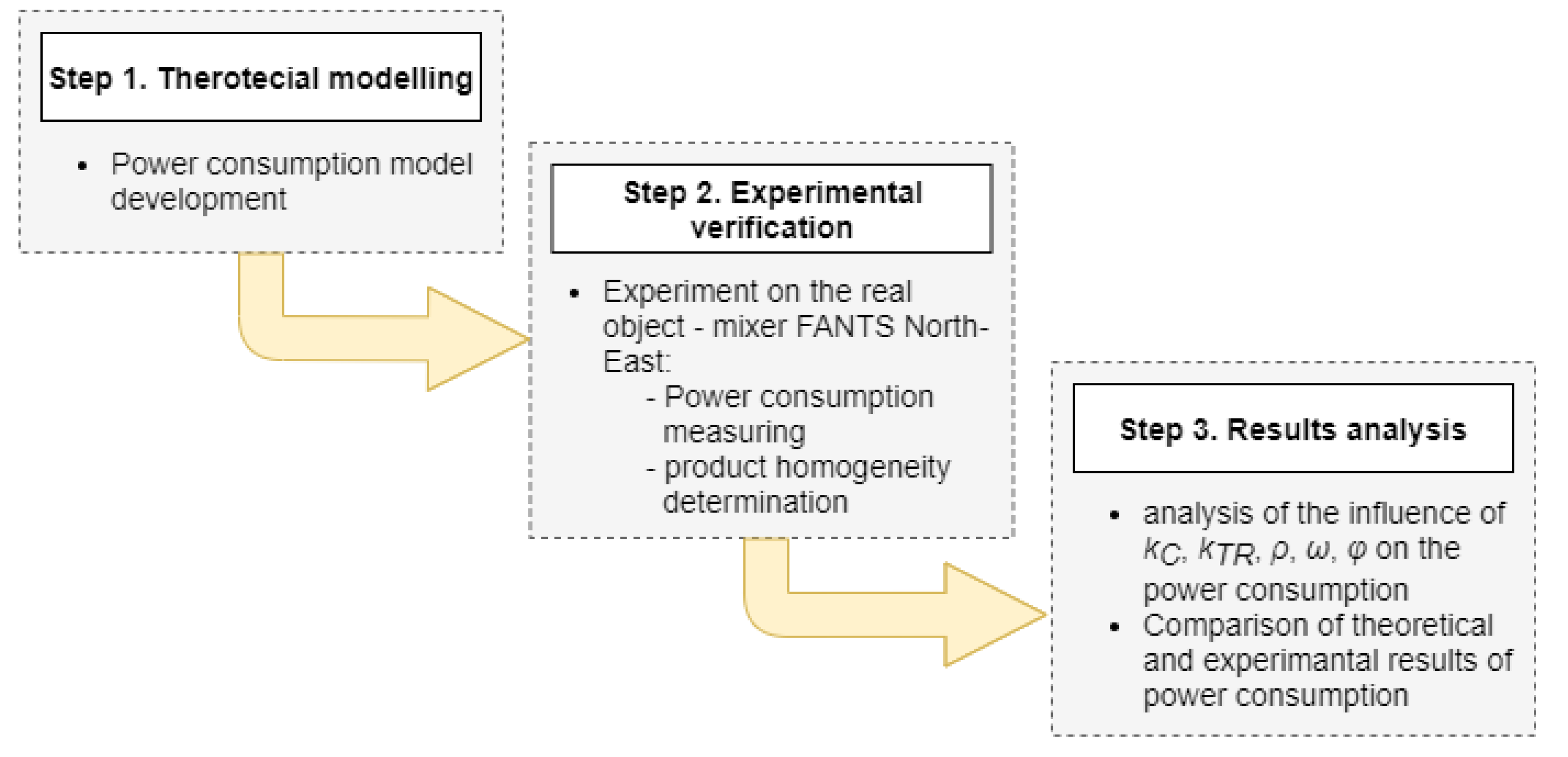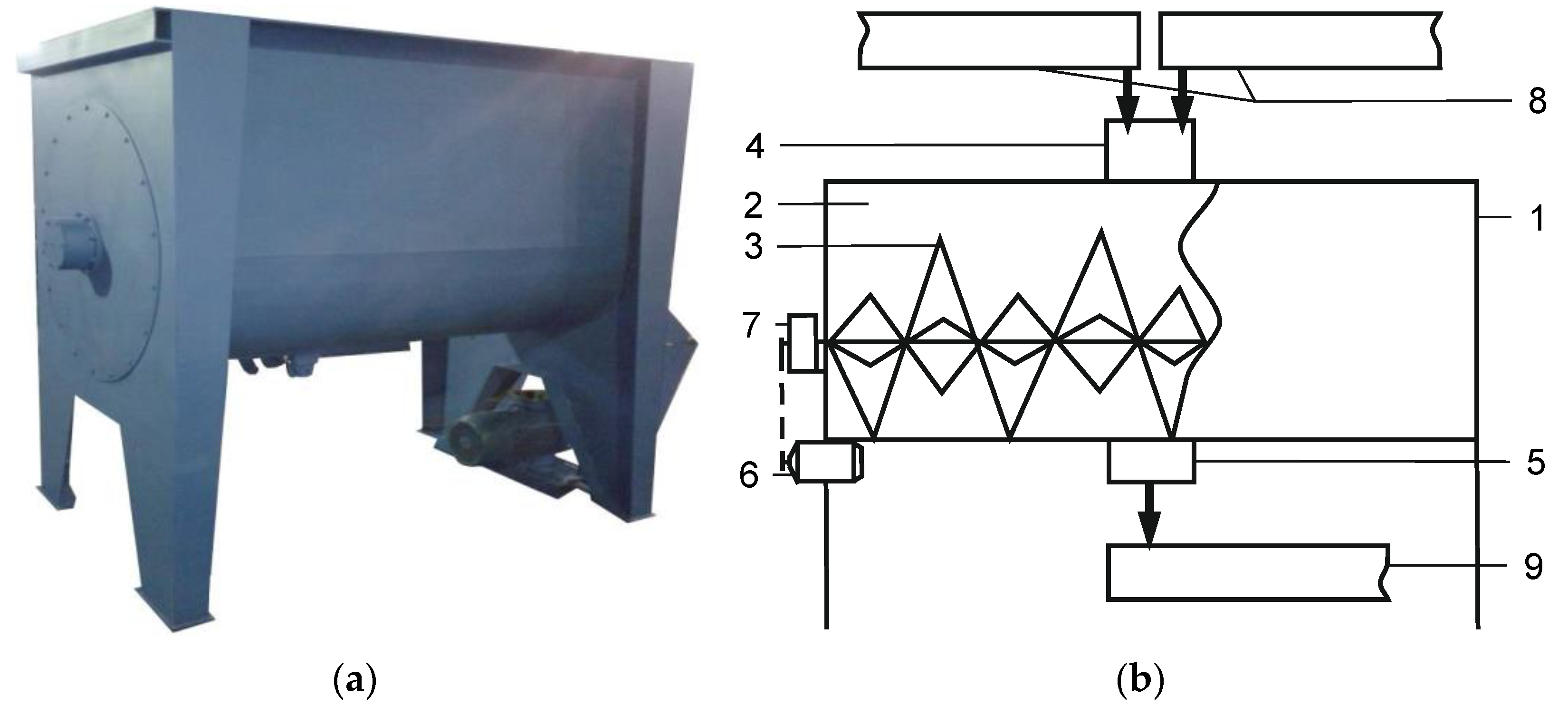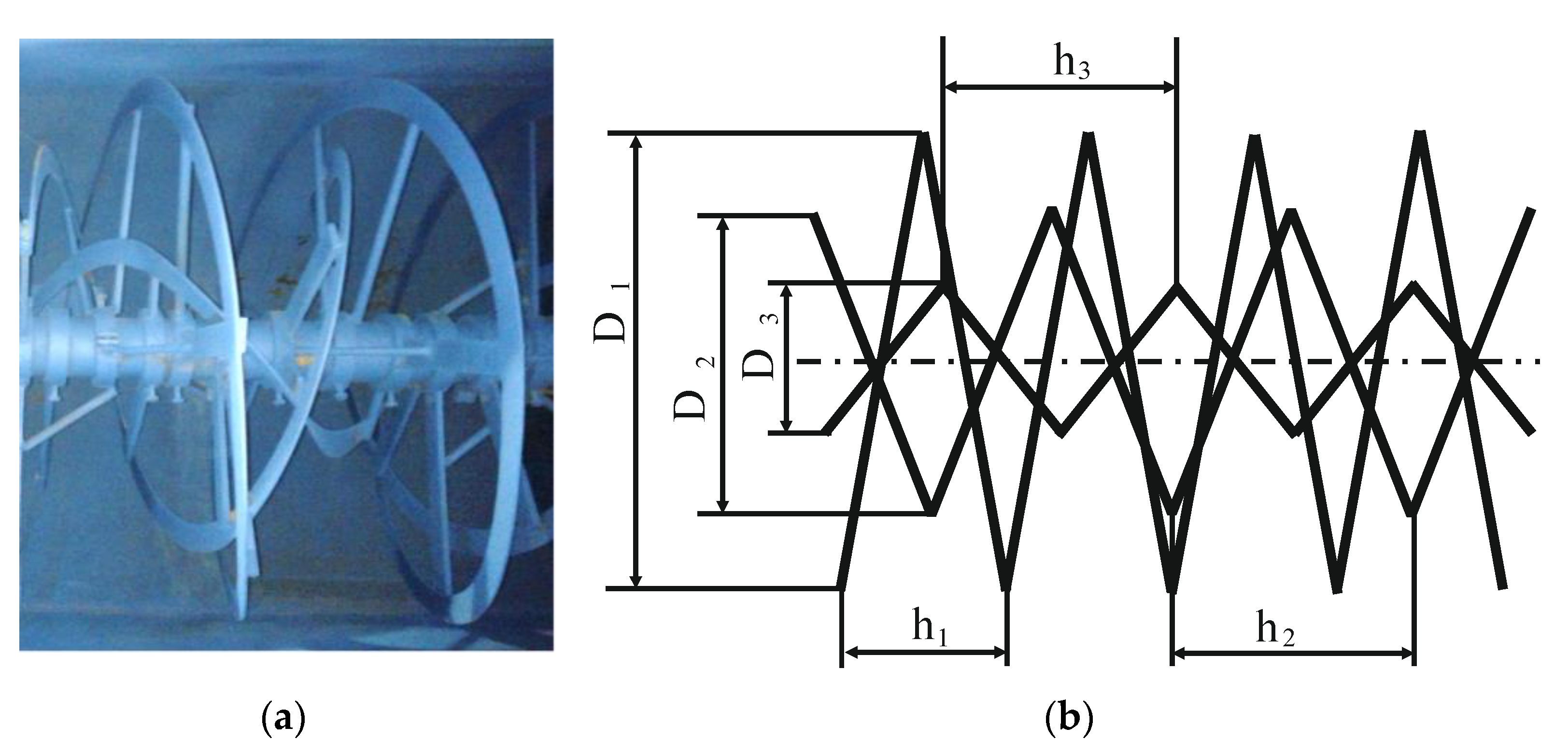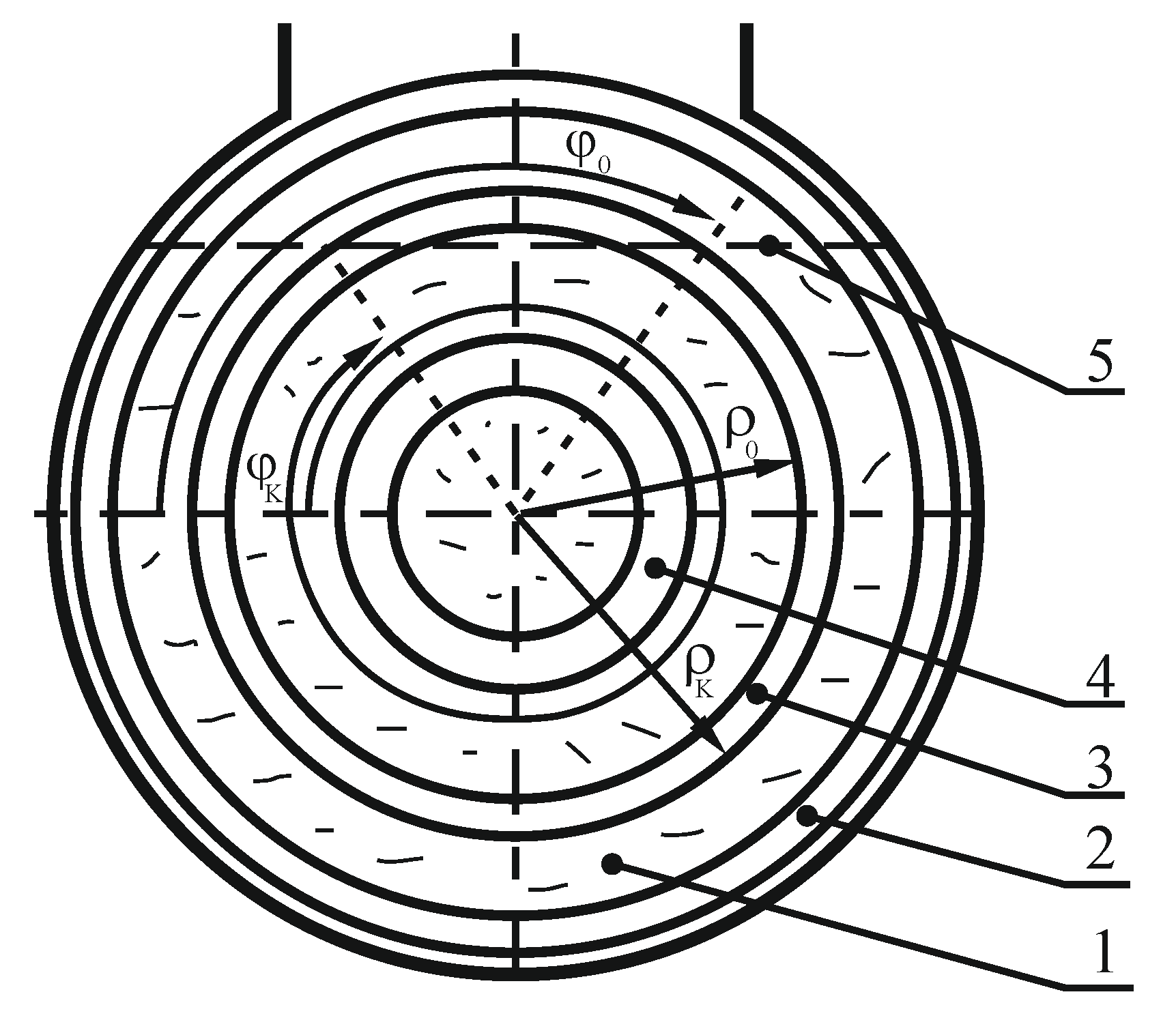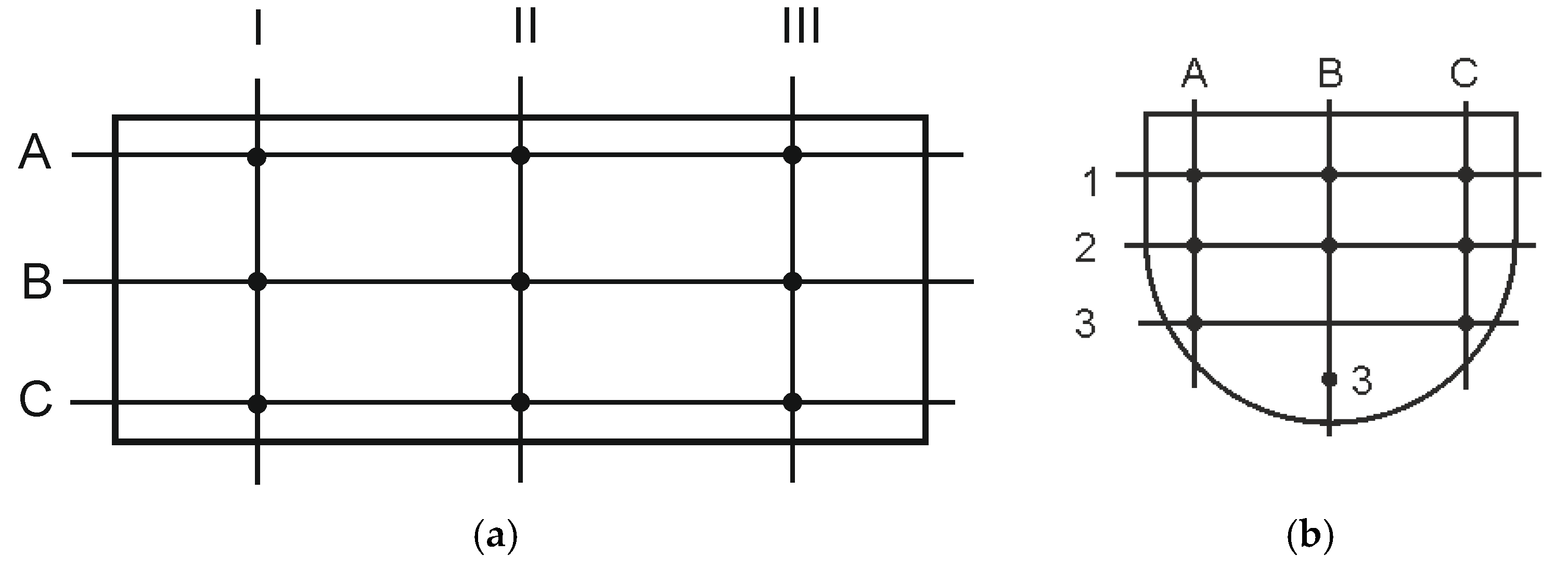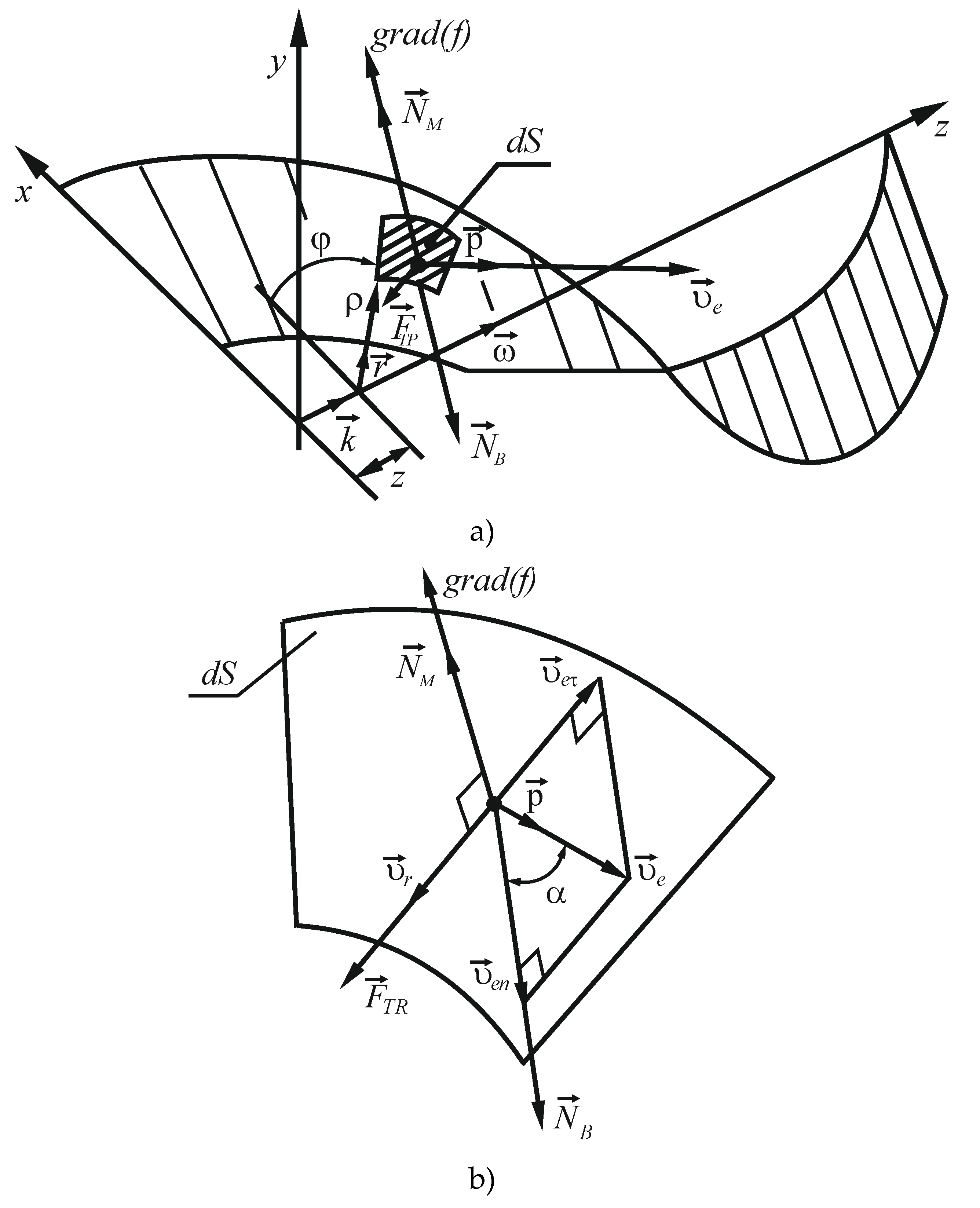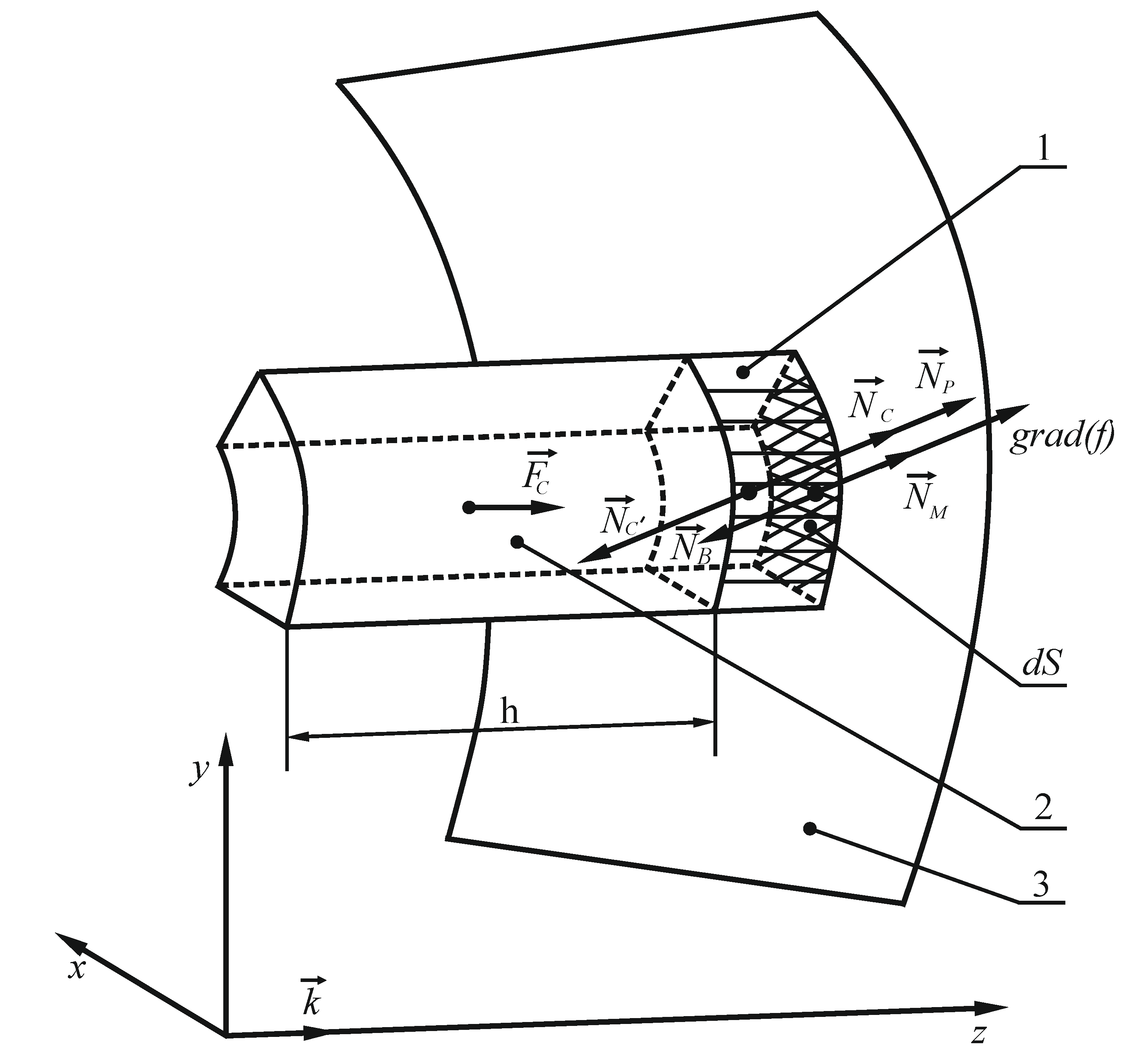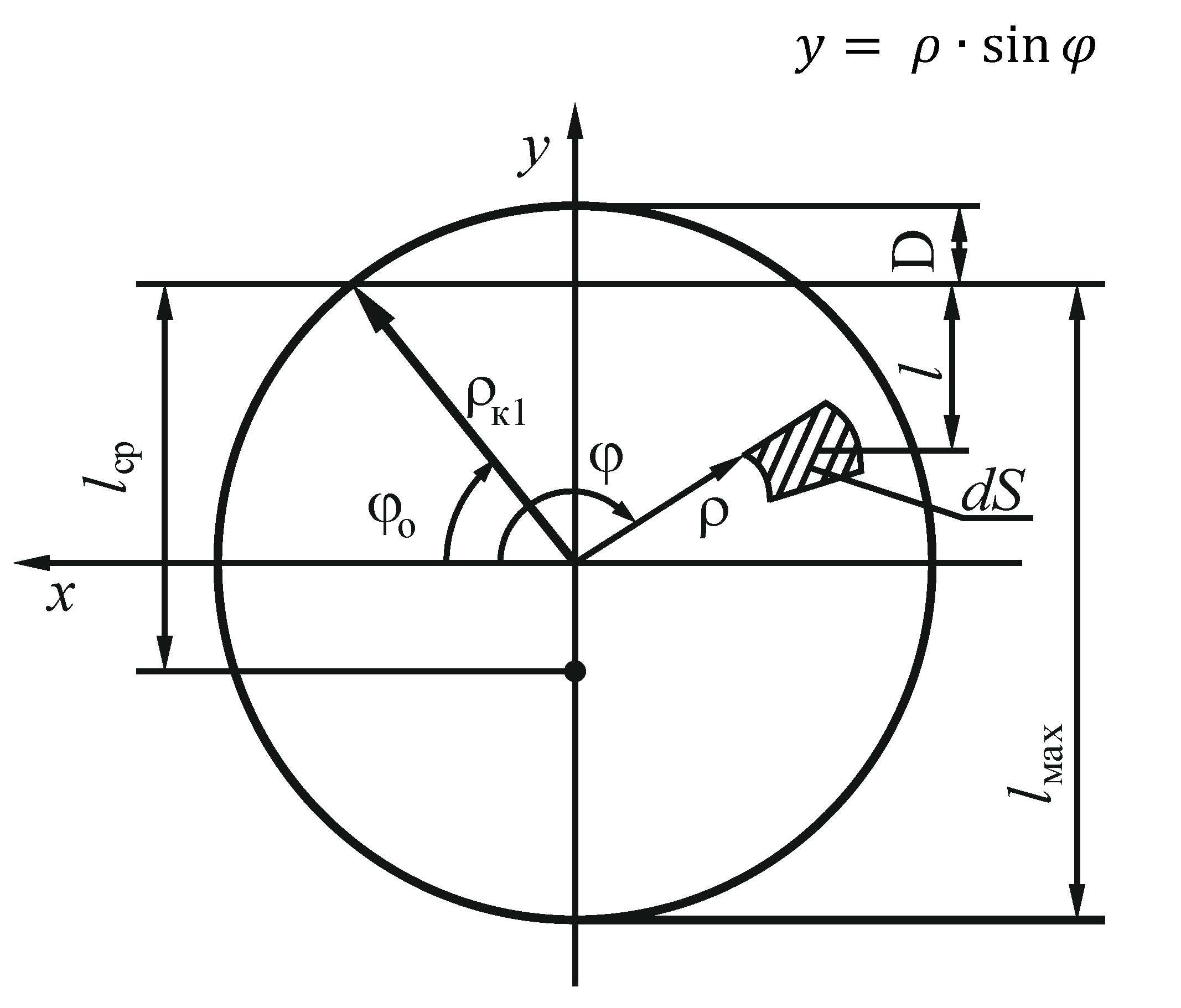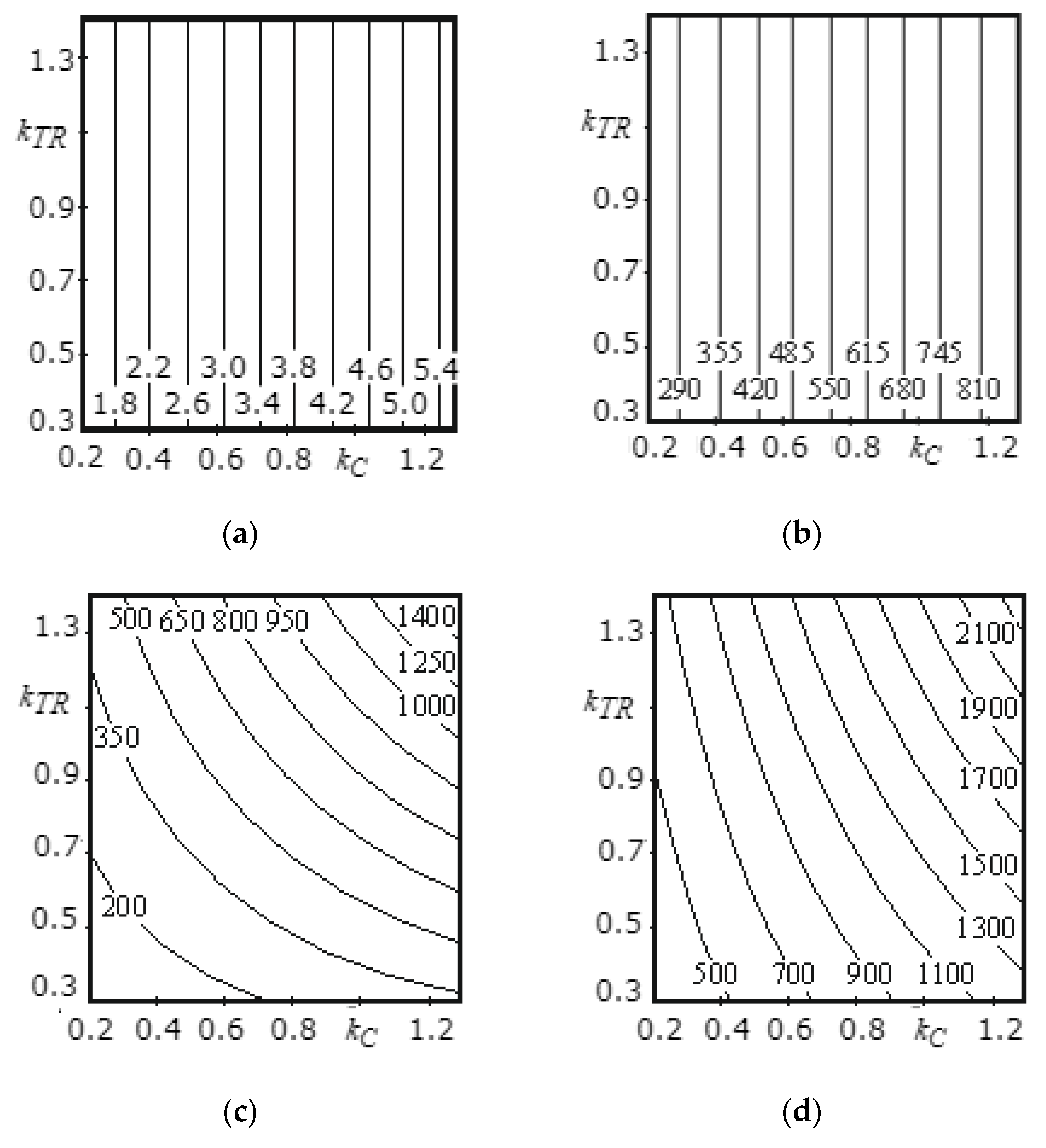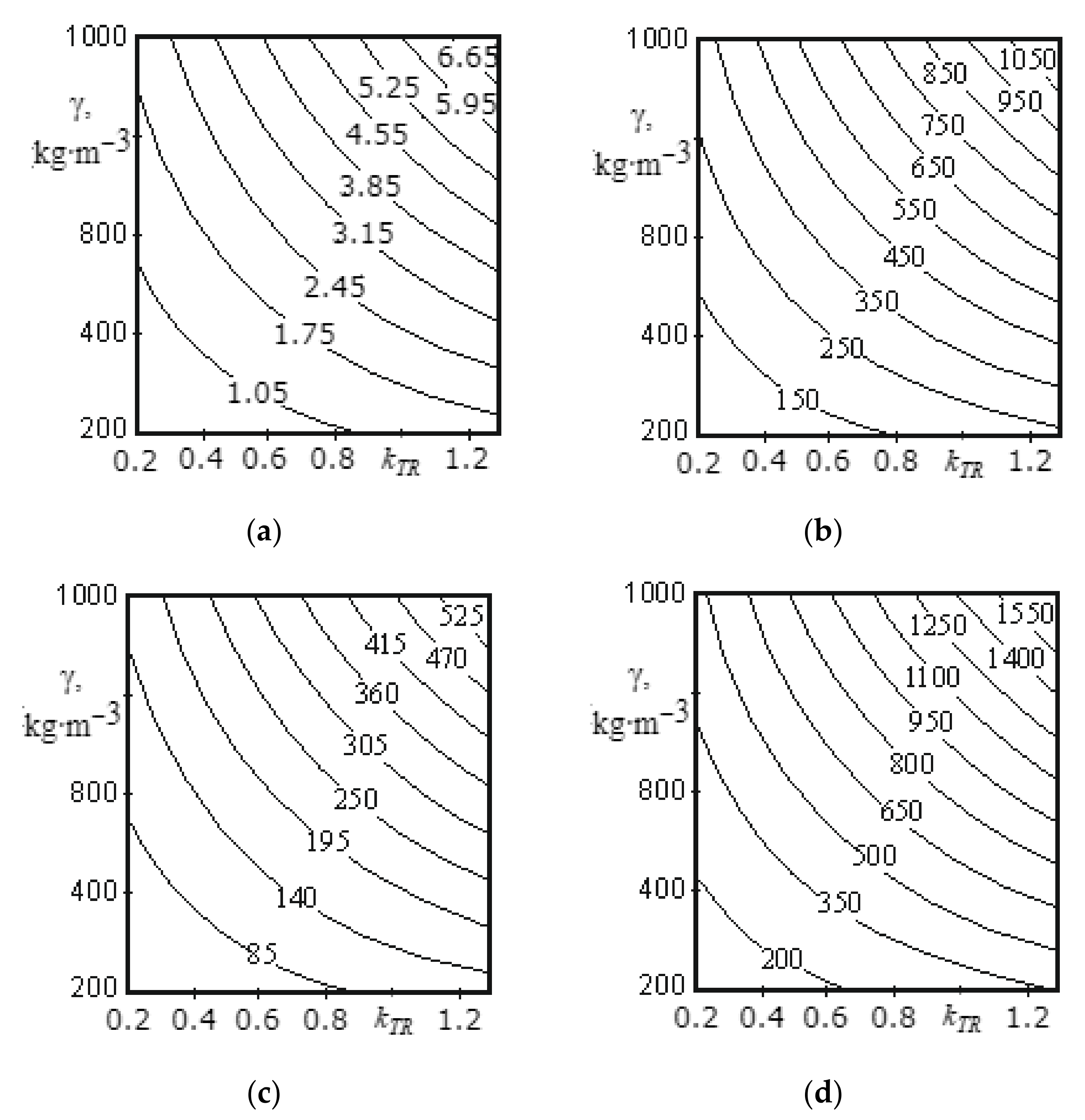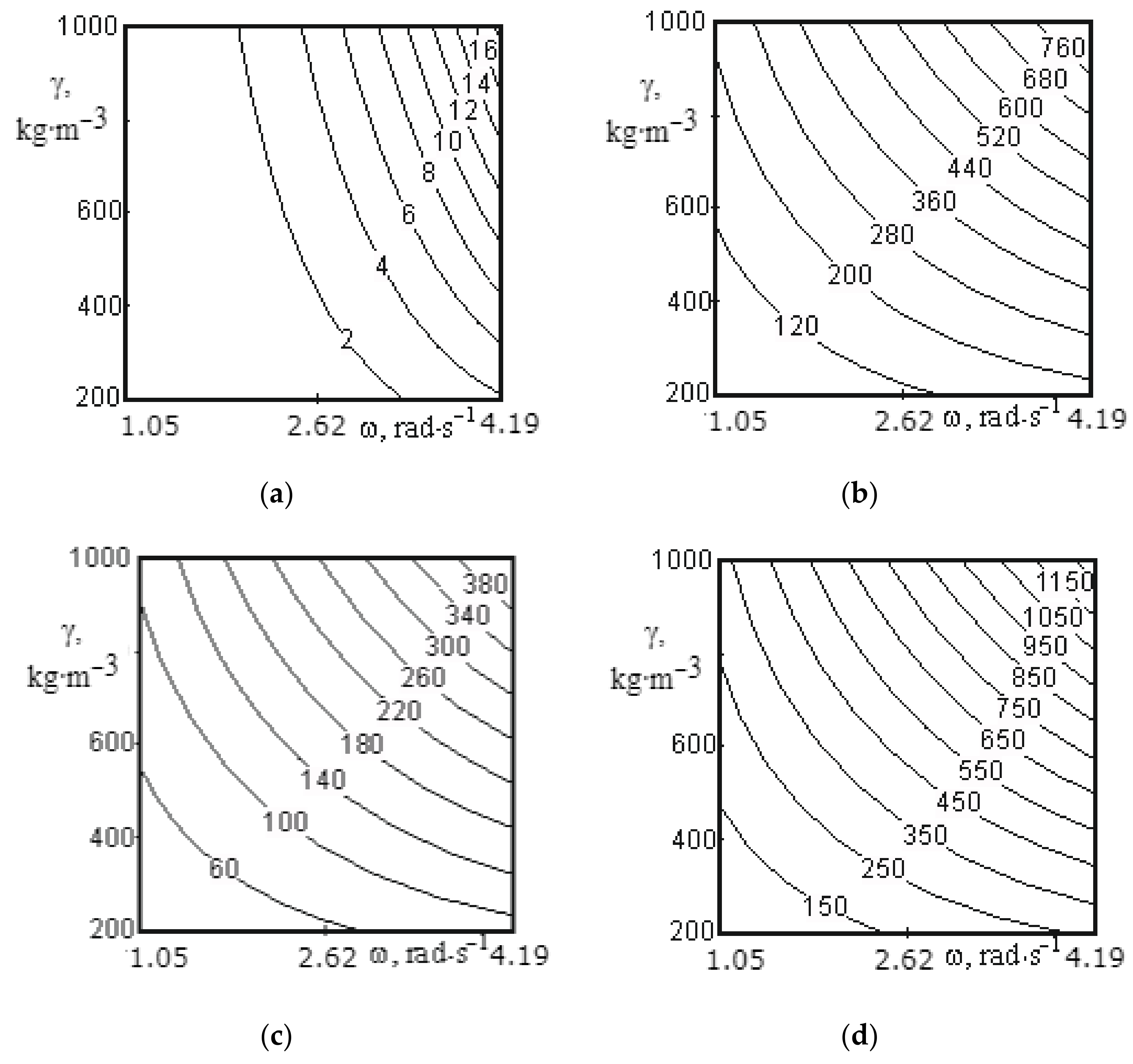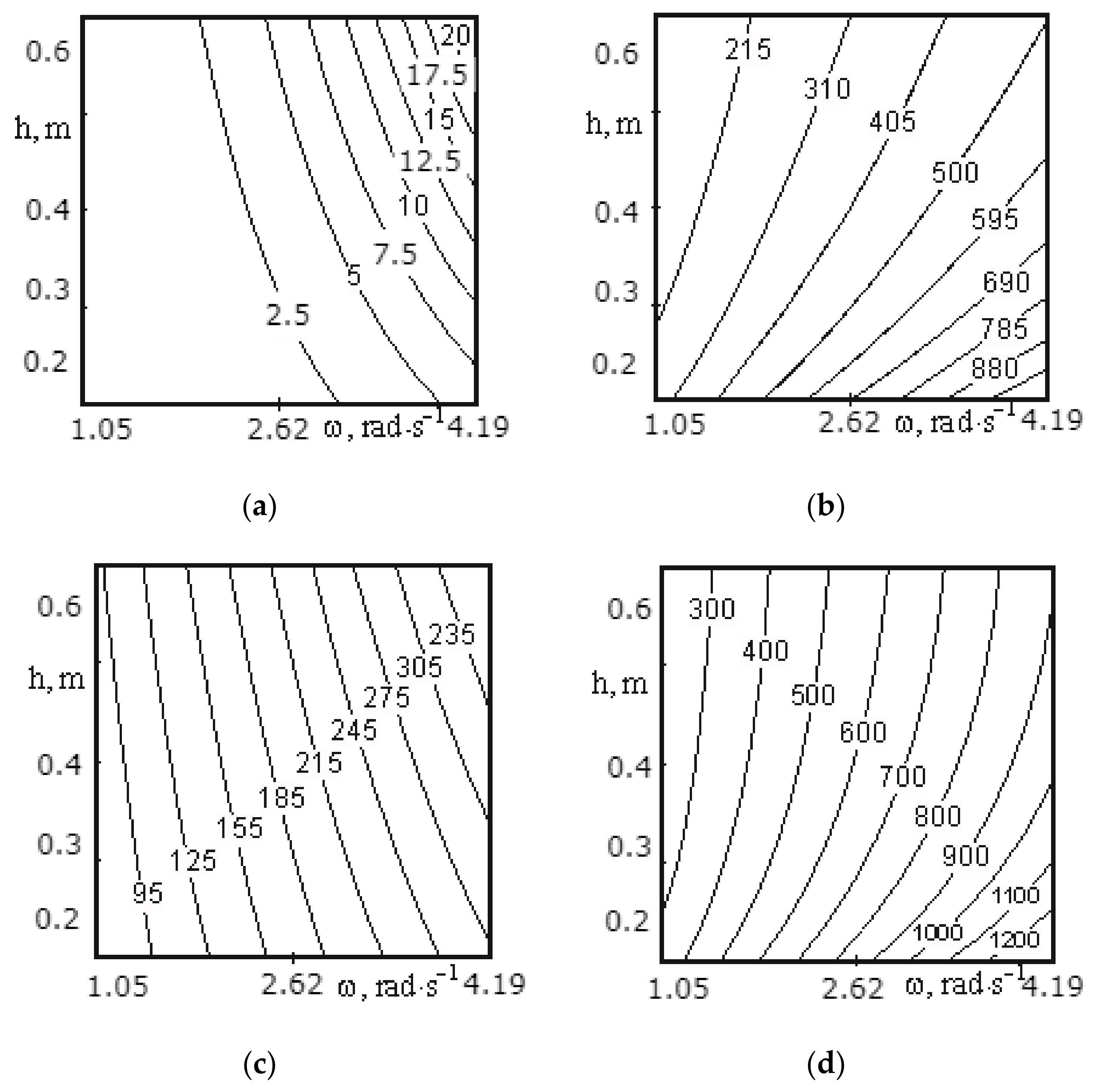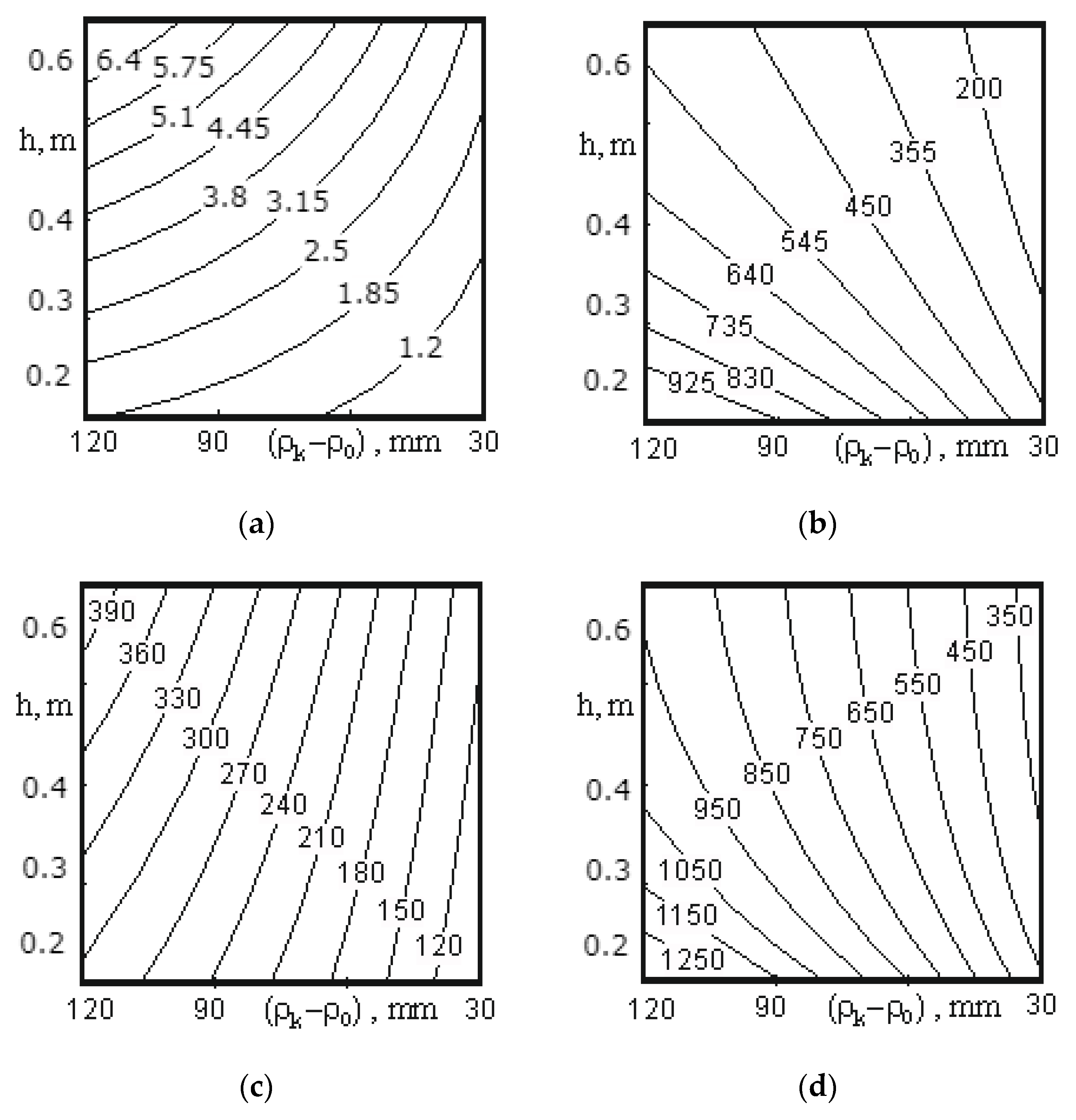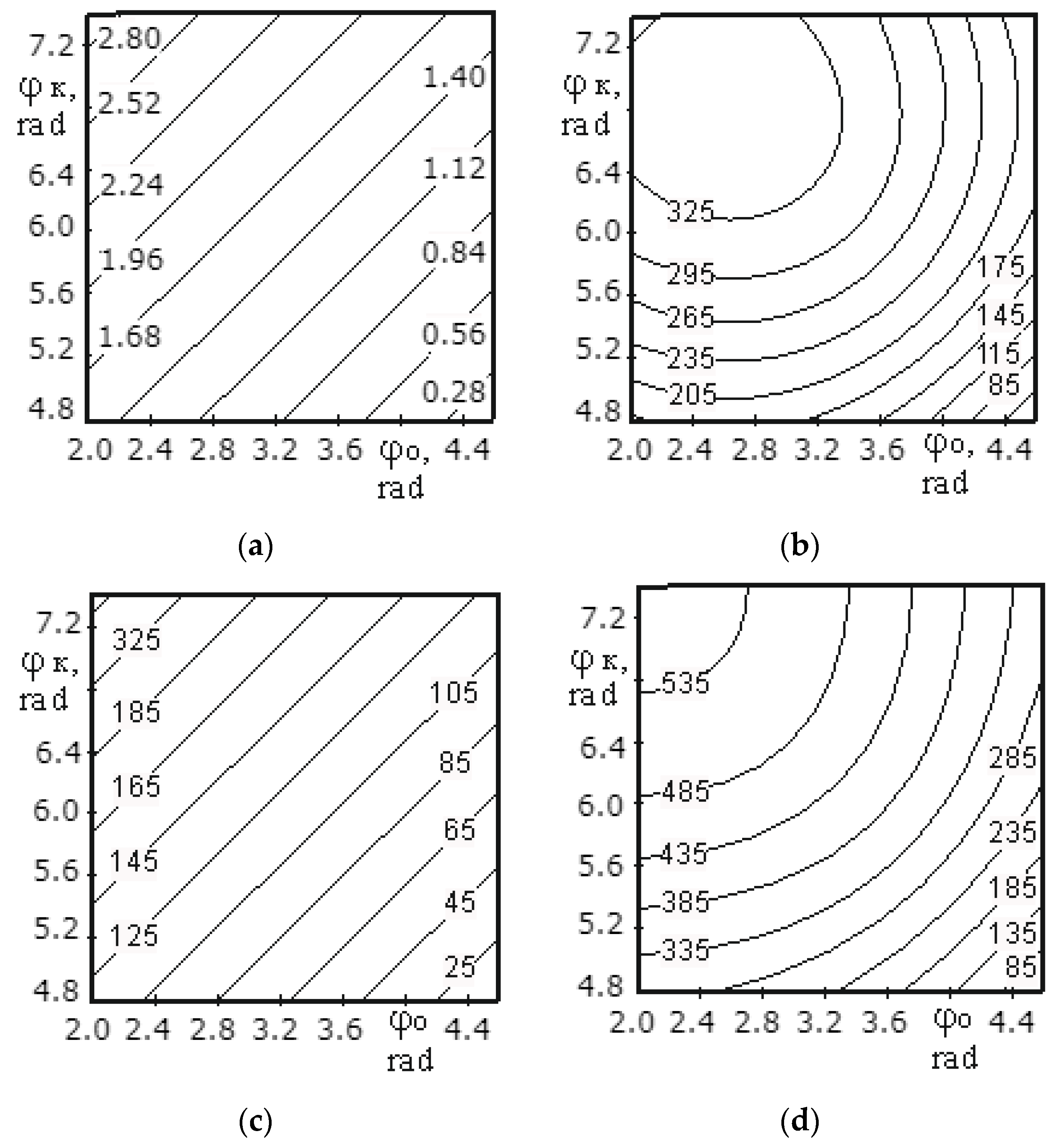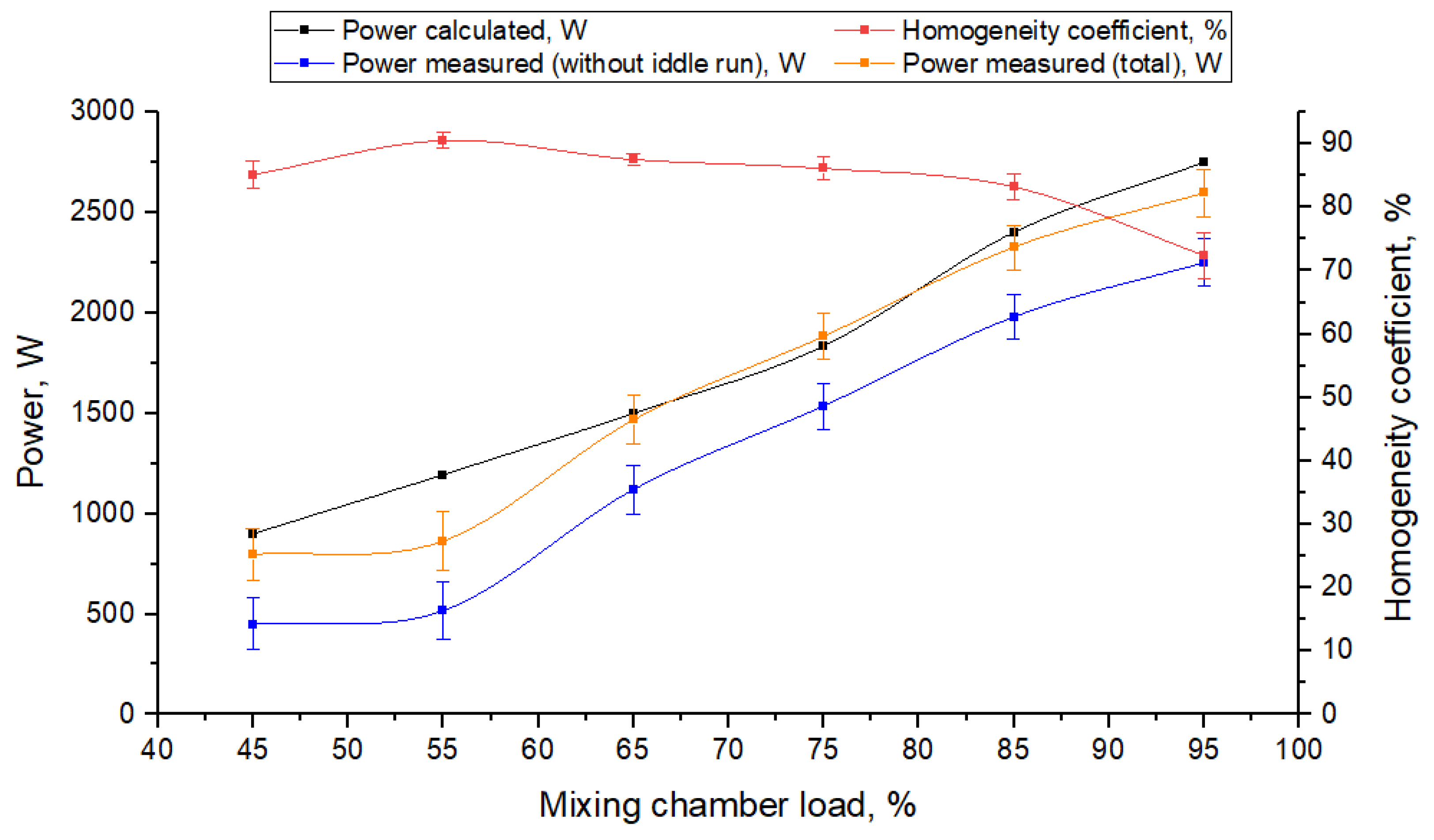1. Introduction
In order to increase the efficiency of livestock production, it is necessary to use food balanced in nutritional value. The main step in the preparation of balanced feeds is to mix the components [
1,
2,
3,
4]. One of the most commonly used in mixing processes are screw mixers (single, double and multi-screw) [
5], to which the considerations in this paper will be limited.
Final product mixes must be highly homogeneous. Due to the variety of materials that are mixed with each other (they can be both bulk materials and liquid additives), it is necessary to carry out detailed theoretical considerations and, consequently, to verify developed models by means of experiment, in order to describe the processes of materials mixing to achieve the highest possible process efficiency and product quality [
4,
6,
7,
8]. The flow of materials, and the resulting mixing efficiency, depends on the parameters of the mixed materials (particle size, moisture, porosity, particle shape, friction coefficients) [
9,
10,
11], and the design features (geometric, material) of the mixer [
4,
12,
13] as well as the parameters of the mixing process itself, e.g., time, rotational speed of the mixing elements, the size of the stream of dosed materials, power and torques [
14,
15,
16].
Incorrect selection of the design and process parameters results in disturbances in the mixing process and in obtaining an incomplete, heterogeneous product of low quality [
17]. Disturbances in the mixing process cause other operational problems, e.g., increases in specific energy consumption, maintenance costs, damage to working elements and their faster wear, and difficulties in keeping the machine clean [
1].
The need for theoretical modeling of mixing processes results precisely from the operational problems in the machine mixing and the problems related to the material flow itself in contact with the working elements of the mixers, which include, among others: loss of the mobility of the bulk material due to clogging of the dosing channels in the feed supply systems; too high intermolecular friction, which causes the effect of clogging of the material, and consequently leads to material losses or deterioration of the quality of the mixing product, and even energy losses and a decrease in the process efficiency and, thus, an increase in costs [
9,
18,
19,
20]. Therefore, it seems rational to model and search for optimal material, process and construction parameters for the bulk materials mixing processes, taking into account the physical basis of the behavior of these materials in contact with the working surface of the mixing devices.
The theoretical, analytical studies of the effect of structural and technological parameters on power consumption when mixing different feed components are rather rarely, because of complicated calculations, due to many factors affecting the process [
21]. Therefore, a number of assumptions need to be used in calculations.
Experimental tests and theoretical studies of the mixing process of solutions are presented in work [
22]. Among others, the impact of the feed material motion, caused by pumps and mixers, on energy efficiency of different structural features (geometric) of mixing units has been analyzed. Sulisz and Paprota [
23] proposed a semi-analytical solution to be used for modeling of dependencies between the water particle motion and the mixture temperature changes. They have proven consistence of the theoretical model with the results of tests performed using laboratory mixing devices. George et al. [
24] present the results of comparative and numerical analyses and experimental tests for determination of Rayleigh–Taylor mixing rates, which prove that the results of theoretical, experimental and numerical calculations of the acceleration rate are consistent when the values of acceleration rate are renormalized with regard to mass diffusion. Theoretical research and experimental tests have proven that the properties of materials motion and mixing largely depend on the grain moisture and when modeling the material flow it is necessary to know the particle size and shape distributions [
9,
25]. Most of theoretical models were associated with calculation of torques, energy consumption and volumetric efficiency. Roberts [
26] developed a model of volumetric performance taking into account the so called granular Vortex motion, which depends on internal friction and friction between the particles and helical surface. Additionally, models based on the particle diameter and the transported mass volume were used for theoretical descriptions of the capacity, whereas the motion of particles was determined as a resultant of the screw size and the friction angle between the particle and the screw surface [
27]. Work [
28] presents a discussion on the subject of the impact of structural solutions of a feeding screw on the power and loads during operation. It was indicated that a complex approach, that is, an analytical-experimental one is necessary in design and power prediction for conveyors. Dynamics based studies of the particle motion in contact with the screw surface are presented on the example of feeding screws by proving that the screw rotational speed and the material pressure inside the screw have an impact on the operational efficiency [
29]. Theoretical analyses provided by the literature are based on assumptions which do not find application in small scale devices which do not account for interaction between the particles and the particles and the walls of the device [
9]. In this work, complex analyses have been presented taking into account these interactions in modeling of a mixer power consumption.
Calculations for mixing processes, due to the discrete nature and the multitude of factors affecting the course of the process, are performed on the basis of numerical methods and models, including the discrete elements method (DEM) [
9,
30]. For example, Pezo et. al. [
21] investigated numerically (with the use of DEM) and experimentally the influence of various design forms of the screw mixers on the efficiency of the mixing process. Bednarek et. al. [
31] created a DEM algorithm for the mixing process in a conical screw mixer, which allowed to shorten the computation time. Cai et al. [
5] also used DEM to determine the effect of rotational speed and sweeping speed on process quality and mixing efficiency in a double-screw conical mixer. Similar studies conducted by Qi et al. [
32], showed that the rotational speed of the screw does not significantly affect the mixing process (as opposed to Cai et. Al. [
5]) while increasing pitch length and reducing solid feed rates causes decrease in mixing performance. Connelly and Kokini [
33] in turn, using the 2D finite element method (FEM), determined the velocities and trajectories of particle flow in a single and double screw mixer. Similar studies, but using 3D FEM, were carried out by Rathod and Kokini [
34]. Based on the numerical analysis with the use of DEM and the experimental results, Pezo et al. [
35] determined a mathematical model in the form of second order polynomial and artificial neural network model describing the quality of mixing in a double-screw mixer. In the paper [
36], Mihailova et al. demonstrated using computational fluids dynamics (CFD) that mixer height is a key parameter influencing mixing performance. The influence of some design features of mixing elements on mixing efficiency in cylindrical mixer with use of DEM was presented in [
37] showing, that three bladed mixer has better performance that mixer with two or four blades. The attempts have also been undertaken to experimentally determine the mixing process parameters. Kingston and Heindel [
16] determined experimentally optimal process parameters of mixing in a screw-mixer, indicating that the best process efficiency occurs at a rotational speed of 60 rpm and dimensionless screw pitch of 1.75. In other work [
25], the effect of scale on mixing effectiveness was investigated. The screw rotation speed, screw rotation orientation, dimensionless screw pitch, and particle size were investigated and compared for three double-screw mixers of differing scales [
25] and it was found that scaling up with smaller biomass particle sizes results in significantly greater losses in effectiveness than for larger biomass particles. In [
38] it was shown that the smaller size of mixed particles, the highest efficiency of mixing, while reducing particles concentration causes the reduction in efficiency.
To date, numerous studies (some of them described in this introduction) have been conducted on the interaction between the material particles and the working bodies of mixers, but they do not fully reflect the processes occurring in the mixing chamber; therefore, our theoretical studies presented here are relevant.
According to the presented motivation, the purpose of this work is to study the interaction between the screw surface of the mixer screw and the material.
The contributions of this paper include:
Dynamic and kinematic analysis of flow of granular material in the mixer including interaction between screw surface and material,
Determination of the influence of degree of grinding of the material, speed of mixer shaft rotation, density of material, coefficient of friction of material against steel and material, number of screw turns per unit length and width of the screw tape on the mixer power value, described with mathematical dependence,
The determination of ranges of optimal design parameters of the screw mixer and mixing process based on the conducted theoretical study.
3. Theoretical Approach
Let us consider the rotation of the screw (helical) surface around its axis in a horizontal mixer for bulk materials using the theorem on the change of angular (kinetic) momentum [
42]:
where
is inertia moment of the mixer shaft together with the screw surface and material moved in transfer motion,
is angular velocity of the shaft,
is torque moment from the drive applied to the shaft,
is normal material response acting on the elementary area of the screw surface in the projection onto the direction of its motion, that is, on the cylindrical axis
,
is the material friction force applied to the elementary area of the screw surface in projection onto the axis
,
is the radius in the cylindrical coordinates of the elementary area of the surface, which is the arm of the component forces along the direction
,
means the summation of moments from forces applied to all elementary areas of the screw surface (
Figure 6).
For dynamic analysis of interaction between the material and the screw surface, we assume that gravity forces applied to the mixed material are symmetric relative to the vertical axial section of the mixer, and that they do not affect the rotation of the screw. The second assumption is that in the process of interaction between the elementary volume of the material and the elementary area of the screw surface, the friction forces from other elementary volumes of the material are negligible.
When the mixer shaft rotates at a constant angular velocity (
), the moment required to maintain it, without considering structural friction resistance, can be determined as per Equation (3):
Normal response
is directed along the gradient towards the screw surface. The equation of the screw surface in cylindrical coordinates is written as:
Gradient vector to the surface
has the following components according to the cylindrical unitary vectors (
:
Partial derivatives in Equation (6) are equal to:
Then the gradient to the surface is
For normal response
, projections are proportional to projections of the gradient vector on the cylindrical coordinate axes:
where
is an indefinite Lagrange multiplier.
When using the right screw of the surface in accordance with Equation (5) and the angular velocity
is co-directional with the
axis (see
Figure 6), this factor is positive
). The magnitude of the force
, determines the friction force,
, in the modulus in accordance with the Coulomb’s law for dry sliding friction with the coefficient of
: (
λ ≥ 0).
The direction of the friction force
is opposite to relative velocity of the elementary area of the screw surface relative to the material
. The mixed material is at a standstill before it interacts with the screw surface. After interaction, it acquires a velocity that has two components: transfer
, and relative velocity in motion along the screw surface
, and friction force applied to the latter coincides in direction with the elementary surface:
We assume that after interaction with the screw surface the material slides in its tangent plane, maintaining the value of the relative velocity component, which it had before the interaction. Since the material was standstill before the interaction, the relative velocity
is equal to
—the projection of velocity of the elementary area
onto the tangent plane to the surface, but is opposite in direction (as was presented in
Figure 6b):
Let us define the projection of velocity
onto the direction of the gradient vector:
Then the magnitude of the tangential velocity component is found by the Pythagorean theorem:
Taking into account Equation (13), the modulus of relative velocity
is equal to the value
:
Let us find the projections of the elementary surface velocity
onto the cylindrical coordinate axes, taking into account the vector equality:
The projections of vector
on the right-hand side of Equation (17) take the form:
The projections of the normal component of the elementary surface velocity
onto the coordinate axis are determined taking into account its collinearity with the vector gradient:
Then, by projecting Equation (17) onto the cylindrical axes, we obtain:
Taking into account Equation (13), which reflects the motion of the screw surface in the initially motionless material, we find the projections of relative velocity
on the axis of the cylindrical coordinate system:
We substitute Expressions (25) and (16) into Equation (12) and find the direction of the friction force applied to the elementary area:
If we know the projection of forces acting upon the elementary surface area, based on Equations (10) and (26) we can write down on the right-hand side of Equation (4):
The factor
is equal to the ratio of the modulus of force
—impact of the material on the area
to the modulus
—gradient vector to the surface:
In order to determine the value of
, we consider the force
with which an elementary area of the screw surface impacts the material when in steady motion. According to Newton’s third law, these forces are equal in magnitude and opposite in direction:
Let us apply the theorem on the change in momentum to the volume of the material that interacts with the elementary area
during a certain time period
in the projection onto the gradient vector to the surface. Taking into account that the fragment of material interacting with the surface is not a free flow, adjacent fragments act on it, in addition to the screw surface. We will conventionally group them into two components:
is the force due to pressure of the overlying layers of the material, and
is the force of normal pressure due to resistance to horizontal movement of the portion of the material enclosed between the screw turns (flights) and resting on the platform
(see
Figure 7). This load of material moves horizontally along the screw axis and acts on the flow adjacent to the surface, for which we write down:
where
is the momentum acquired by the material in projection onto the gradient direction,
is the initial momentum of motion of the material in the projection onto the gradient direction,
, since the material was at a standstill.
On the right-hand side of Equation (30), the impulse of force is projected onto the direction of the gradient to the surface.
Force
is the pressure applied by upper layers of the material on the volume interacting with the elementary area
(
Figure 7). It is determined by analogy with the pressure in a liquid, but on condition that the moving surface provides compressive stresses to the considered volume of bulk material (that is, there is no pressure from the rear side of the screw surface). Force
acts as the force of static pressure of the upper layers on the lower ones, assuming equality in all directions, similar to Pascal’s law for liquids:
where an analogue of the static pressure
is determined using the bulk density of the material
, free fall acceleration
, and height
of overlying layers above the elementary area:
where
is maximum radius of external screw of the mixer,
is vertical height of the mixer ullage
, and
is a vertical Cartesian coordinate measured from the screw axis (interpretation of above parameters was presented in
Figure 8):
In Equation (30), force
is the force that overcomes friction force
(along the
z axis), with horizontal movement of the material enclosed between the screw turns, with a length equal to the screw pitch
:
where
is the coefficient of friction between layers of the material,
is the projection of the area
onto the plane (
).
The total frictional force of the material moved by the screw surface along the horizontal axis
is equal to:
However, this force is distributed unevenly along the vertical, since the lower layers are under pressure from the upper ones. Let us assume that the friction force during horizontal movement along the
axis is directly proportional to the layer depth along the
axis, so let us denote it by
:
then the friction force related to the elementary area
is equal to:
where
is the averaged depth of the material layer over the screw surface
S:
where
is a constant value for steady motion, and it is defined as the ratio of integrals over a surface of the first kind:
The ratio between the friction force
and the force of additional normal pressure
on the elementary volume interacting with the screw surface is determined based on the assumption that motion of the material along the axis
is steady (uniform). In addition, the work of force
along possible motion
is equal in magnitude and opposite in sign to the work of the force
along the same motion (see
Figure 7, the material moves opposite to the
axis):
Force
correlates with force
according to action-reaction phenomenon:
where
is the angle cosine between the gradient to the surface and the
axis. Then:
When we substitute the expression for
, we obtain:
After interacting with the surface, the material acquires velocity
, which is made up of the transfer
and relative
components, the projections of which on the coordinate axes were previously determined by Equations (18) and (25), respectively. The relative velocity
has no projection onto the gradient vector, while the transfer velocity
has a projection onto the gradient direction according to Equation (14), then:
where
is mass of the material interacting with an elementary area in
time. With steady motion, when the screw surface is immersed in the material, the value
is determined by the expression:
where
is bulk density of the material,
is the angle between the motion direction of the area
and the direction opposite to the vector-gradient of this area. The direction is opposite because the screw interacts with the material with the side opposite to the direction
(see
Figure 6):
Then, after substituting Equations (47) into (46) and (46) into (45), we obtain:
We compose the theorem on the change in the momentum (Equation (30)) with steady motion, and we obtain:
Hence, we determine the magnitude of the force of action of an elementary area
on the material:
Taking into account Equations (50) and (29), we obtain the relation for algebraic value of the material impact force on the area
:
Due to the awkwardness of Equation (51), the factor
, which is the coefficient of proportionality between the gradient vector
and the force
, is divided into three components in accordance with the components in Equation (51), by denoting:
Based on the expression, the first component
gives:
Using the factor
in Equation (27), we obtain:
By substituting the result Equation (57) into Equation (4), we find the torque required to impact on the material at a given angular velocity
:
When we descend from discrete summation to continuous summation, we obtain an integral taken over the screw surface of the first kind:
Considering that the area of an elementary area is:
we split the integral over the surface into a double multiple integral over two cylindrical coordinates:
where
are the initial and final values of the vector angle, and
are the initial and final values of the radius.
When we simplify the numerator and denominator of Equation (61) by
, we obtain:
Equation (62) has an awkward analytical expression, thus the calculations were carried out using Mathcad software (Mathsoft, Cambridge, MA, USA) using a symbolic processor and the subsequent substitution of the numerical values of all quantities.
Similarly, based on the second component in Equation (51), we obtain:
Using Equation (2), we obtain:
Taking into account that the elementary area is
, the integral over the surface will take the form:
We also determine the contribution to the torque of the third component in Equation (51):
When it is summed into Equation (4), this component will be represented by an integral over the coordinates
and
:
Taking into account that the boundaries and in each of the integrals do not depend on each other and are constants, after we are calculate the integrals over one variable, we determine their difference when substituting the boundaries of another one, which was considered constant while integrating.
Thus, the torque is equal to the sum of three components:
If the values for the vectorial angles are substituted into the limits of integration within one turn (the difference between them will be less than , since the mixer is not fully loaded), and then the result is multiplied by the number of turns, then we get the total torque. The mixer can have screw surfaces with different directions. The calculations are given for the right screw, but Equation (62) is also valid for the left screw, although the axial response of the material to the screw (auger) will change its direction. Similarly, it is possible to sum up the torques from several screw surfaces with different pitch coefficients and different ranges of the radius , which are fixed on the same shaft.
The value of power demand can be calculated using the following equation:
5. Conclusions
The mathematical dependencies obtained as a result of the carried-out theoretical studies make it possible to calculate the value of power consumed by the mixer shaft drive, taking into account various structural and technological factors.
A change in the value of the coefficient of friction of the material against material from 0.3 to 1.4 has a smaller effect on the change in the power value (from 285.4 W to 690 W at kTP = 0.3 and from 1200 W to 2385.2 W at kTP = 1.3) than the change in the coefficient of friction of the material against the screw surface from 0.3 to 1.3 (from 285.4 W to 1200 W at kC = 0.3 and from 690 W to 2385.2 W at kC = 1.4). Thus, the more the mixture components are ground, the more power is consumed for their mixing.
At a low material density (200–250 kg/m3), when the friction coefficient changes from 0.2 to 1.3, the power consumption increases from 80.3 to 350 W, and at a high material density (900–1000 kg/m3) the value of power consumption increases from 490 to 1837.4 W. With an increase in the material density from 200 to 1000 kg/m3, the power value changes from 80.3 to 490 W (at a friction coefficient of 0.2) and from 350 to 1837.4 W (at a friction coefficient of 1.3). Thus, the material with a more developed surface requires more power for mixing.
Analysing the effect of a change in the speed of mixer shaft rotation and the density on the power consumption, it can be concluded that the speed of mixer shaft rotation should not exceed 2.09 rad/s, since the value of power consumed by the motor has a square-law dependence on the rotational speed, and the mixed material should not be over-ground.
Evaluation of the effect of a change in the speed of mixer shaft rotation and the screw pitch on a change in the power value allows the following conclusion to be drawn. The speed of mixer screw shaft rotation should not exceed 2.09 rad/s and the tape pitch of the screw turn should be as large as possible, but taking into account the material mixing quality and the value of power consumption, the pitch of the middle screw should be in the range of 0.4–0.6 m.
Theoretical studies of the influence of the dependence of the power value on the width of the screw tape and its pitch allow to conclude that the pitch of the middle screw should be in the range of 0.4–0.6 m, with a tape width of 30–50 mm, which corresponds to the lowest energy consumption. The pitch of the external screw should be in the range of 0.3–0.5 m with a tape width of 30–70 mm, and for the internal screw, the pitch should be from 0.23 to 0.54 m with a tape width of 30–100 mm.
Based on the conducted tests and conditions of a horizontal mixer operation, the amount of material in the mixing chamber should range within 55–75%, as then the homogeneity coefficient of the obtained material ranges from 90.5 to 86.1%.
An increase in the mixer loading from 55 to 75% with a sufficient homogeneity coefficient of the resulting mixture of 86.1% for feeding the corresponding species of animals or poultry makes it possible to increase the mixer throughput from 2.36 to 3.21 t/h.
In the assumed interval 65–75% of the mixer loading that provides effective and efficient mixing, the results for power consumption determined experimentally and theoretically are consistent which is indicated by low value of relative errors of the results. Thus, it may be concluded that the conducted theoretical studies quite completely characterize the processes occurring in a horizontal tape mixer in the process of feed preparation.
Theoretical and practical significance of this study provides the possibility of using the results of this theoretical research in the mixer design stage for the determination of power consumption of working unit drives with regard to the structural and technical factors. Application of the developed mathematical models allows a reduction in the costs of design, manufacturing, and optimizes the operation of mixers with tape-working bodies. The model of power consumption, including many material, structural and processing variables, enables the improvement of the quality of animal feed mixtures, reduces energy consumption and facilitates their preparation.
Further research should be focused on the identification and investigation of the factors which have the largest impact on power consumption in the process of mixing when such structural and technological parameters as frequency—screw tape width; blade montage—and structural changes of the tape-screw mixing unit are altered.
